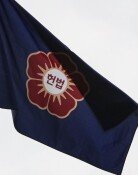Deployment of U.S. strategic bombers to Korea has become swifter
Deployment of U.S. strategic bombers to Korea has become swifter
Posted June. 30, 2020 07:47,
Updated June. 30, 2020 07:47

The U.S. has deployed three nuclear-driven aircraft carriers and strategic bomber jets near the Korean Peninsula, intensifying its military muscle-flexing against Pyongyang as a response to the North’s military threats led by Kim Yo Jong, the first vice director of the United Front Department of the Workers’ Party of Korea. Experts say that the deployment of U.S. strategic bombers, the key deterrence against North Korea’s nuclear program, has become swifter than ever. They say the bomber jets can be deployed to the peninsula as quick as in three hours or in a maximum six hours.
How the U.S. deploys its strategic bombers has a significant ripple effect on the Korean Peninsula as it allows for a system that can subsequently deploy nuclear capabilities and conventional combers in three to six hours in the event of a nuclear provocation from Pyongyang. In fact, the B-1B bomber can scramble to the East Sea in about three hours after departing the Guam base, and the B-52 can fly from the Eielson base to the East Sea in six hours.
With the rhetoric of Kim Yo Jong’s provocations ever more escalating, the U.S. scrambled the fleets of B-1B and the B-52 to the Korean Peninsula as response. “Unlike the B-1B bombers that load only conventional weapons, the B-52 bomber jets must have left the North quite jittery as they can be equipped with nuclear air-to-land missiles and have been deployed to the peninsula three times over a week since the North destroyed the liaison office in Kaesong,” said a South Korean military official. “It used to take around four to five hours for the B-52 bombers to fly from Guam to Korea, and deploying the B-1B bomber jets to Northeast Asia from the mainland U.S. took a minimum 10 hours.”
In addition, it has become much easier to deploy the two different bomber jets simultaneously to the Korean Peninsula as the B-52 bombers have been removed from Barksdale Air Force base to Alaska, slashing the distance from Korea from over 10,000 kilometers to 5,500 kilometers.
“The North is finding itself sandwiched between the B-1B’s conventional weapons deterrence in the west and the B-52’s nuclear deterrence in the east,” said the military official. “This will add a headache to Pyongyang in staging provocations against Seoul and Washington in the future.”
Sang-Ho Yun ysh1005@donga.com
Headline News
- Med professors announce intention to leave hospitals starting Thursday
- Bridge honoring Sgt. Moon Jae-sik unveiled in Pennsylvania
- Chief of Staff Chung tells presidential secretaries to stay away from politics
- US FTC bans noncompete agreements
- N. Korea launches cyberattacks on S. Korea's defense companies







